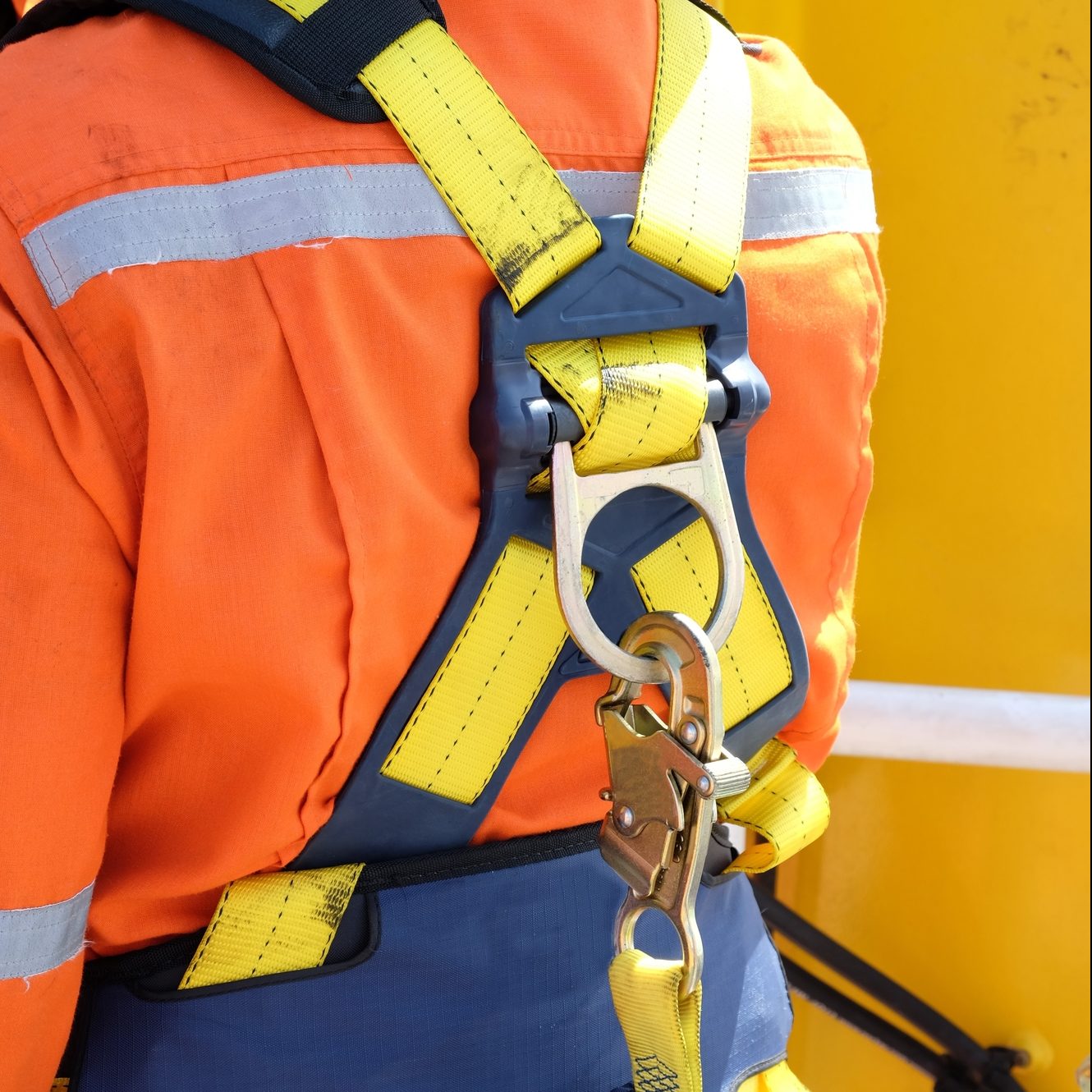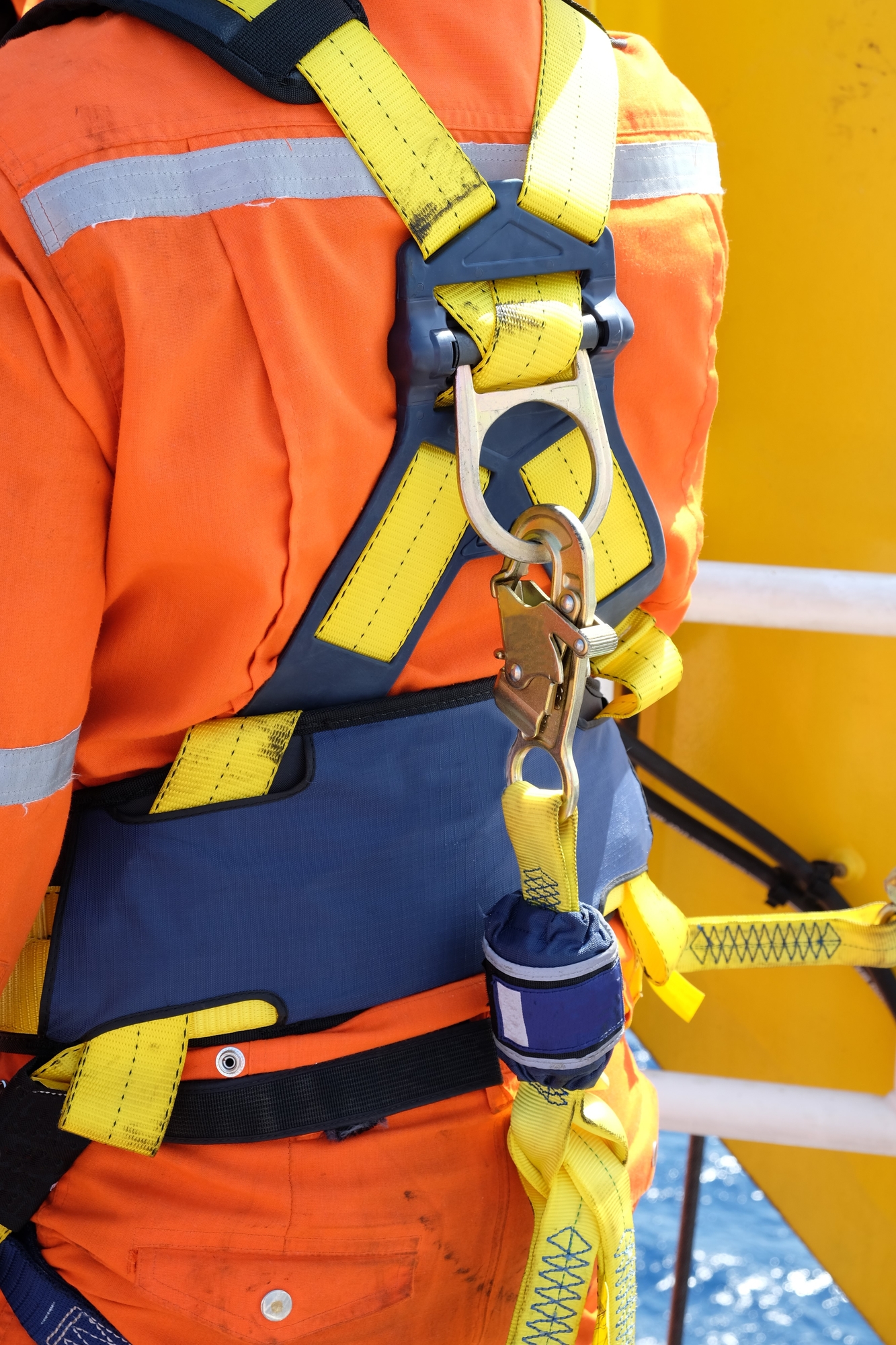PPE Focus of the Month: Harnesses and Lanyards For Fall Protection
How well have you trained your employees to use their OSHA fall protection systems? Do they know what to look for
when inspecting their harnesses and lanyards? Can they identify suitable anchor points? Do they know how to select lanyards that are the correct length for the fall exposures to which they will be exposed?
If the answer to any of these questions is no, then it is your duty as their employer to correct these gaps in their understanding. Our workers are exposed to these fall hazards as a direct result of performing the work that we require them to do; therefore, our obligation is to ensure their safety when they perform this work. This is not always an easy task. The nature of our work may require them to work in many different locations each with unique conditions. Not only that, but just because we have trained them in OSHA fall protection standards and practices does not mean that they fully understand.
Just recently, a construction worker fell thirty feet from a scaffold in Fort Lauderdale and sustained life threatening injuries. He was wearing a harness when he fell. While the details of the incident have not been released, the incident itself creates a powerful reminder that we need to consider the safety of our own workers. What could have gone wrong here?
Equipment failure is a possibility. If this were the case, though, it leads to further questions as to whether it was inspected? If so, were the harness and lanyard in good working condition without sign of visible defect? Did the employee notice the defect but chose to use it anyway? Could there have been a visible defect that the employee did not recognize as something that compromised the safety of his OSHA fall protection system? Any of these are possible; even if none of these are true for this injured worker, they are all situations that could happen elsewhere and contribute to another employee’s fall.
Another possibility is that the worker did not understand how to properly set up his equipment, use the appropriate anchor point, and calculate the correct lanyard length. Fall protection needs to be tailored to each situation, and is vital to employees using fall protection correctly. They need to understand a little math, and be trained to recognize and account for many factors when selecting and setting up their OSHA fall protection systems.
Consider this scenario:
A worker is on the third floor of a building and wearing a personal fall arrest system. There is a large hole nearby, leading to the second story floor that is ten feet below. The worker is attached to an anchor point in the middle of the wall of the third floor, about 5 feet above floor level, with a six-foot lanyard. Since the floor is ten feet below, the worker won’t hit the floor below, right?
Wrong.
Workers can strike surfaces almost nineteen feet below the anchor point when using a six-foot lanyard. How?
- The six-foot lanyard represents six-feet from the anchor point to the middle of the worker’s shoulders, where the dee ring of the worker’s harness should be.
- Six-foot lanyards typically have a three-and-a-half-foot deceleration device to reduce the impact of the sudden stop on the human body.
- There might be an additional three feet of stretch in the harness and lanyard.
- The dee ring will now be roughly five-and-a-half feet, or as low as two-and-a-half feet, above the floor of the second story.
- When a worker falls, the harness usually gets pulled up, and the dee ring will be roughly in line with the worker’s head.
- Assuming the worker is six feet tall, the worker’s feet will be roughly six feet below the dee ring.
- The worker’s feet, legs, and possibly even the lower body have struck the floor of the second story at this point with all the force of an adult body falling ten feet.
One of the most common mistakes made when using personal fall arrest systems is choosing the wrong lanyard length for the fall exposure. Many workers mistakenly believe that a six-foot lanyard is what they need when surfaces are six feet below them. As we saw in the above example, those workers could strike that surface below them without any slowdown from their lanyards.
Do your workers know how to do this calculation, and select the correct lanyard length? Do they understand it well enough to know that based on their calculations, there may not be an appropriate fall arrest lanyard available, and that other OSHA fall protection needs to be used? If the answer is not a clear yes, then it is time to call your workers back in for additional training. Remember the incident of the injured worker from Fort Lauderdale; remember that the same thing can happen to one of your workers if we fail to ensure they are properly trained and adequately prepared for the potential hazards that they face. Every worker should be valued, and every worker deserves to be safe.









